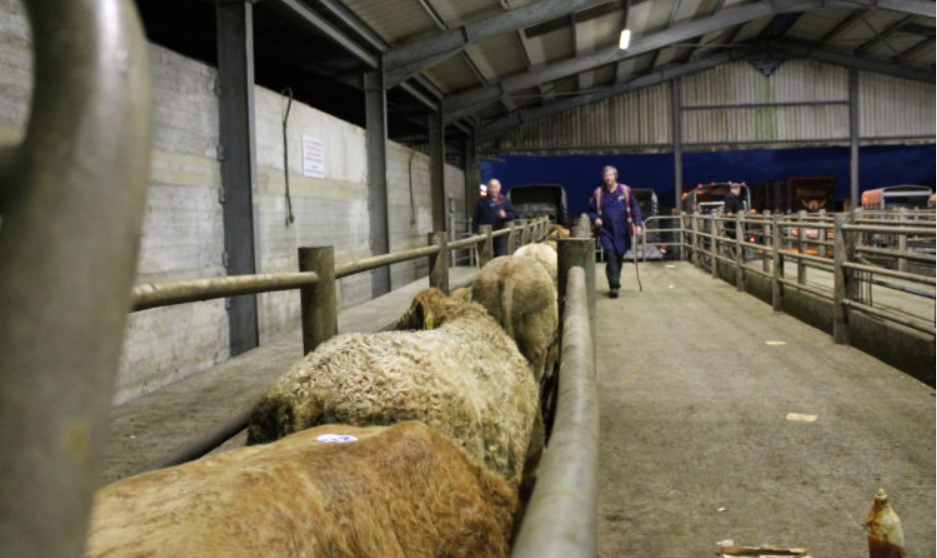2019 for the Irish beef industry will live long in the memory of everyone involved in the sector. It is fair to say that the drought of 2018 and the beef price collapse of 2019 has made a sizeable dent in beef farmers’ pockets.
As expected, the cattle mart trade in 2018 suffered as a result of many factors, including the obvious uncertainty that surrounds the entire sector; and the dark cloud of Brexit, which has the potential to cause serious problems for Irish beef farmers.
While the trade did struggle throughout the year, there were also some positive months which beamed optimism despite the beef climate.
One of the welcome aspects of the live cattle trade in 2019 was witnessed during the autumn period.
There was a fear as we entered into those months that the weanling bull trade could completely collapse due to price issues and slaughtering delays that farmers faced from the get go in 2019.
However, it was quite the opposite. While mart managers have noted that prices – on average – are behind 2018 levels, the presence of live exporters at the ringside was a welcome boost.
Live export contracts to both Libya and Turkey – agreed by numerous companies – left exporters battling for suitable and eligible bulls at marts around the country.
Despite the vibrant bull trade, the same could not be said for heifer prices. The absence of exporters was felt ringside and farmers were left to purchase these lots.
Although, at that time, bull prices were relatively good, they were not without their problems prior to the autumn – especially heavier lots.
The start to the live cattle trade in 2019 was sluggish and, with a long slaughter delay emerging throughout January, heavier bull prices dropped – which added further uncertainty around the viability of bull-beef.
Again, slaughter date delays and a backlog of factory-fit cattle in the system – which resulted from the factory-gate protests – posed more problems for live cattle prices, which slowed farmers’ return to the ringside to purchase replacements.
When it comes to steer and heifer prices, mart managers have noted that prices for both are back on 2018 levels; however, many have highlighted that the branch of optimism witnessed in the late months of the year was a welcome boost.
Another aspect of the live trade was the reduced number of dairy cull cows passing through the sale rings compared to 2018 levels.
In 2018, the summer drought left dairy farmers with no other option but to market their empty and cull cows earlier to reduce feed demand.
2019 proved to be the complete opposite. With an abundance of feed available on dairy farms, many farmers have chosen to ‘milk on’ cows. And, the same can be witnessed in the beef kill. In 2019, there were some 49,000 fewer cows slaughtered when compared to 2018 levels.
This week will see the majority of marts return to action after the Christmas period and, with a nugget of optimism surrounding the sector, hopefully 2020 will be a better year for live cattle prices.
Carnew Mart
On Saturday last, January 4, Carnew Mart held its first sale of the year. The mart’s manager, David Quinn, highlighted that some 530 head of cattle passed through the ring – a sizeable number for the first sale of the year.
He said that the trade was strong, with prices improved on the pre-Christmas period – particularly for beef and forward stores; he also noted that factory and feedlot agents expressed interest along with farmer buyers.
- Charolais: 554kg – €1,190 or €2.14/kg;
- Limousin: 456kg – €1,070 or €2.34/kg;
- Belgian Blue: 510kg – €1,055 or €2.06/kg;
- Limousin: 304kg – €750 or €2.46/kg;
- Hereford: 400kg – €740 or €1.85/kg.
In relation to cow prices, he said that 120 dry cows witnessed an improvement in price. Lots which required further feeding emerged at pre-Christmas break prices.
Charolais: 602kg – €1,235 or €2.05/kg;
Limousin: 600kg – €1,310 or €2.18/kg;
Limousin: 572kg – €1,240 or €2.16/kg;
Hereford: 531kg – €980 or €1.84/kg.


